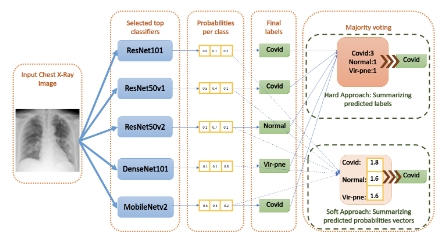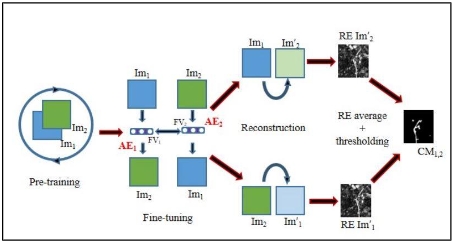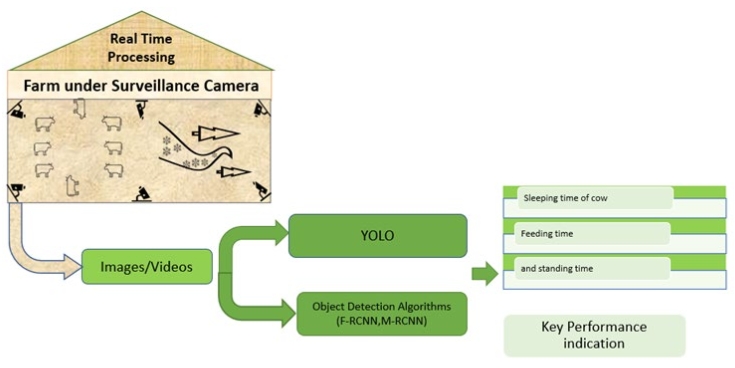Deep insight: Navigating the horizons of deep learning in applications, challenges, and future frontiers
Abstract
Deep learning, a powerful subset of artificial intelligence, has emerged as a transformative force shaping the landscape of technology. This research delves into the multifaceted realm of deep learning, exploring its diverse applications, confronting inherent challenges, and envisioning future prospects that beckon innovation. The journey begins with a comprehensive examination of how deep learning has catalyzed breakthroughs in various domains. In the realm of applications, the study meticulously dissects the impact of deep learning on natural language processing (NLP), computer vision, autonomous systems, medical and healthcare domains, financial forecasting, and more. From deciphering human language nuances to revolutionizing medical diagnostics and propelling autonomous vehicles, deep learning’s applications redefine the possibilities of artificial intelligence. As the exploration of applications and challenges unfolds, the research pivots towards the future horizons of deep learning. It contemplates the trajectory of explainable AI (XAI), the promises held by transfer learning, the integration of deep learning with quantum computing and neuromorphic architectures, and the ethical dimensions that will shape the evolution of AI for the greater good. The abstract encapsulates a panoramic view of “Deep Insight”, where deep learning transcends its current achievements, confronting challenges head-on and embracing a future characterized by responsible innovation. This research invites stakeholders, researchers, and enthusiasts to embark on a journey of exploration, discovery, and contemplation, as the realm of deep learning continues to unfold its vast and captivating horizons.
References
[1]LeCun Y, Bengio Y, Hinton G. Deep learning. Nature 2015; 521: 436–444. doi: 10.1038/nature14539
[2]Esteva A, Robicquet A, Ramsundar B, et al. A guide to deep learning in healthcare. Nature Medicine 2019; 25: 24–29. doi: 10.1038/s41591-018-0316-z
[3]Topol EJ. High-performance medicine: The convergence of human and artificial intelligence. Nature Medicine 2019; 25: 44–56. doi: 10.1038/s41591-018-0300-7
[4]Caruana R, Lawrence S, Giles C. Overfitting in neural nets: backpropagation, conjugate gradient, and early stopping. In: Leen T, Dietterich T, Tresp V (editors). Advances in Neural Information Processing Systems. MIT Press; 2000. pp. 402–408.
[5]Amodei D, Olah C, Steinhardt J, et al. Concrete problems in AI safety. Available online: https://arxiv.org/abs/1606.06565 (accessed on 22 January 2024).
[6]Carvalho VF, Cohen IG. The general data protection regulation as a guardian of digital rights. Science 2019; 364(6439): 1235–1237.
[7]Yang Q, Liu Y, Chen T, et al. Federated machine learning. ACM Transactions on Intelligent Systems and Technology 2019; 10(2): 1–19. doi: 10.1145/3298981
[8]Chen XW, Lin X. Big data deep learning: Challenges and perspectives. IEEE Access 2014; 2: 514–525. doi: 10.1109/access.2014.2325029
[9]Amodei D, Olah C, Steinhardt J, et al. Concrete problems in AI safety. Available online: https://arxiv.org/abs/1606.06565 (accessed on 22 January 2024).
[10]Goodfellow I, Bengio Y, Courville A. Deep Learning. MIT Press; 2016.
[11]Szegedy C, Zaremba W, Sutskever I, et al. Intriguing properties of neural networks. Available online: https://arxiv.org/abs/1312.6199 (accessed on 22 January 2024).
[12]Dean J, Corrado G, Monga R, et al. Large scale distributed deep networks. In: Pereira F, Burges CJ, Bottou L, Weinberger KQ (editors). Advances in Neural Information Processing Systems 25: 26th Annual Conference on Neural Information Processing Systems 2012. Curran Associates, Inc.; 2013. pp. 1223–1231.
[13]Pan SJ, Yang Q. A survey on transfer learning. IEEE Transactions on Knowledge and Data Engineering 2010; 22(10): 1345–1359. doi: 10.1109/tkde.2009.191.
[14]Marcus G. Deep learning: A critical appraisal. Available online: https://arxiv.org/abs/1801.00631 (accessed on 22 January 2024).
[15]Aaronson S. Read the fine print. Nature Physics 2015; 11: 291–293. doi: 10.1038/nphys3272.
[16]Floridi L, Cowls J. A unified framework of five principles for AI in society. Harvard Data Science Review 2019; 1(1). doi: 10.1162/99608f92.8cd550d1
[17]Satyanarayanan M. The emergence of edge computing. Computer 2017; 50(1): 30–39. doi: 10.1109/mc.2017.9
Copyright (c) 2023 Rakesh Roshan, Om Prakash Rishi, Mothukuri Sridevi

This work is licensed under a Creative Commons Attribution 4.0 International License.










